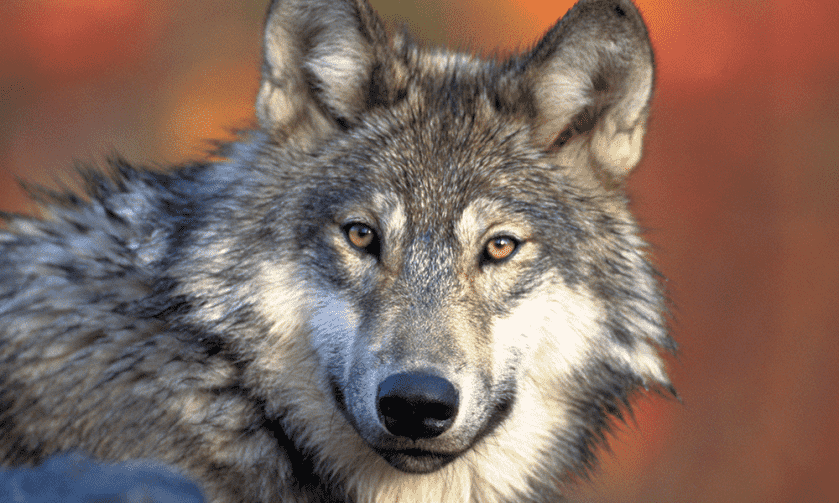
The Idaho state legislature passed a bill last week that could reduce the wolf population in the state by 90%. The legislation, which flew through the capitol in about 10 days and is now pending the signature of Republican Gov. Brad Little, allows for private contractors to help control the wolf population and removes many of the hunting regulations currently in place.
The legislation (SB1211) is supported by the agriculture industry but opposed by the Idaho Department of Fish & Game Commission and conservation groups.
Supporters argue that Idaho’s wolf population is already much larger than required by the state’s wolf management plan: while the plan only calls for 150 individuals and 15 packs, the total population currently stands at 1,500 wolves. Farmers, ranchers, and some hunters also point out that wolves prey on livestock and game species like elk and deer.
“We have areas of the state where the wolves are having a real detrimental impact on our wildlife,” said House Majority Leader Mike Moyle, one of the bill’s sponsors. “They are hurting the herds, elk and deer. This allows the Wolf (Depredation) Control Board and others to control them, also, which we have not done in the past.”
Opponents believe the bill’s provisions could endanger the wolf population in Idaho and revert control of the species to the federal government.
“The bill will waste millions of dollars of public funds on killing wolves, and threatens to ultimately return the species to the endangered species list and federal management,” the Western Watersheds Project and about a dozen other environmental groups said in a statement.
SEE ALSO: Alabama: Hunters Can Now Take Coyotes, Hogs At Night
The Game & Fish Commission opposes the bill because it allows the legislature, rather than biologists and ecologists, to manage the wolf population in Idaho.
“While the Commission shares the sponsors’ stated objectives to manage the wolf population for lower levels of conflict and lower numbers, the proposed amendments…represent a significant downside to the state’s ability to manage our wildlife responsibly,” IDFG Director Ed Schriever testified before the Senate on behalf of the Commission. “Accordingly, the Commission has adopted the position to not support Senate Bill 1211.”
Wolf hunting and trapping are allowed in the state most of the year, but hunters must adhere to regulations governing the hunting methods used. SB1211 removes those provisions and allows hunters and trappers to use baiting, night vision, snares, poison, snowmobiles, off-road vehicles and more.
“Any method utilized for the take of any wild canine in Idaho shall be available for the taking of wolves,” the bill states.
The bill allows individuals to purchase an unlimited number of wolf tags and hunt wolves all year long. Currently, wolf tags cost $13 for residents and $31 for non-residents.
The legislation also allows the state to hire private contractors to kill wolves and increases the amount of money the Idaho Department of Fish and Game sends to the Idaho Wolf Depredation Control board from $110,000 to $300,000.


60% of the wolves in N. Central Idaho have tested positive for hydatid tapeworm disease ( echinococcus granulosus) as of a couple of years ago. Probably more prevalent now. This is a serious disease parasite that is dangerous to domestic dogs and humans as well. Canine carnivores are the primary hosts of this tapeworm and deer and elk and humans are an intermediate host where the tapeworm larvae burrow out through the gut wall and form cysts in the organs and tissues. Surgery is required to remove them if they become life-threatening in humans. Deer and elk pick up the parasite from grazing on grass where wolf scat containing eggs have been deposited, and humans from petting their domestic dogs that may have eaten deer offal, or by handling dead wolves that have been contaminated. The eggs are deposited on their fur from cleaning themselves with their tongues and licking their rectal areas, which canines do. Wolves infest themselves by eating deer and elk that have the encysted larvae. If you handle wolves, wear rubber gloves and practice good hygiene to prevent getting this parasite. It’s time to reduce their numbers. The more wolves, the more scat, the more contaminated deer and elk. These eggs can remain viable for months on grass. Deer livers that show small cysts are a sure indicator the animal is contaminated, but they can form cysts elsewhere as well. They say it is safe to eat if cooked well, but really? This disease was unknown in Idaho until the introduction of the wolf several years ago. The liberal environmentalists that brought us these animals just chuckle and say no big deal. The Australian sheep industry has been dealing with it for years. Just worm your dogs regularly. Really? How do you worm a wolf population?